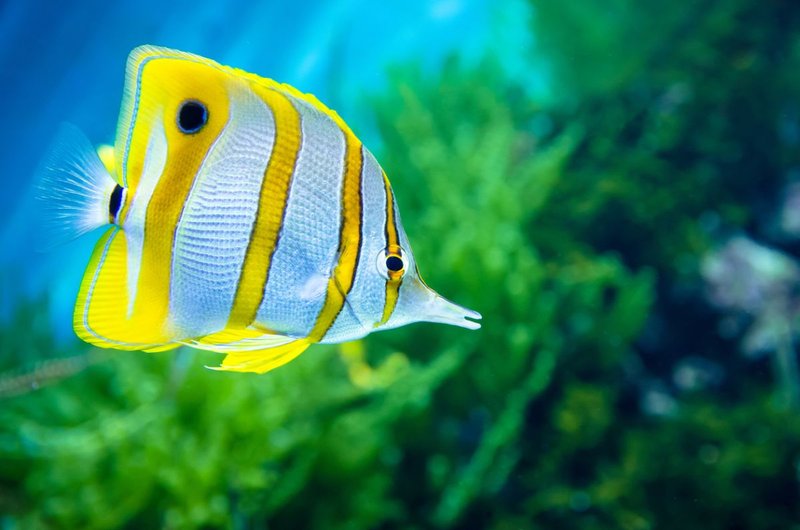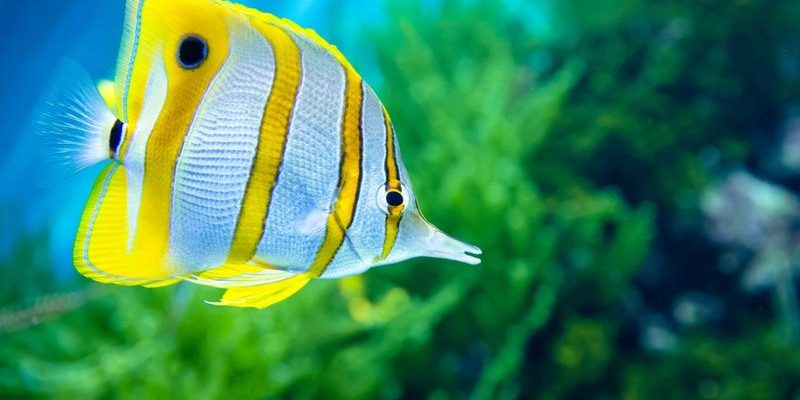
Let’s dive into the world of butterflyfish care together. If you’re just starting with a saltwater aquarium, you might feel a little overwhelmed, and that’s okay! Think of it as preparing a new dish; you need to gather your ingredients and understand the instructions before you start cooking. In this guide, we’ll cover everything from tank setup to feeding habits, ensuring your butterflyfish thrives in its new home.
Understanding Butterflyfish Species
There are over 120 species of butterflyfish, and while they all share some similarities, their individual needs can vary significantly. Popular species include the Moorish Idol, the Longnose Butterflyfish, and the Raccoon Butterflyfish. Each has its own unique colors and behaviors, and understanding these differences is key to providing the best care.
For beginners, I’d recommend starting with more robust species like the *Raccoon Butterflyfish*. These fish are known for their adaptability and are often more forgiving of beginner mistakes. On the flip side, species like the *Moorish Idol* can be quite challenging and may require more specialized care, making them better suited for experienced aquarists.
When selecting your fish, consider not just their beauty but also their compatibility with your existing aquarium. Some butterflyfish can be territorial or aggressive towards other fish, so you’ll want to do a bit of homework here.
Setting Up the Perfect Aquarium
The environment you create for your butterflyfish needs to mimic their natural habitat as closely as possible. They thrive in warm, clear waters with plenty of structures like corals and rocks. It’s essential to provide hiding spots and plenty of swimming space.
Here’s a checklist for setting up your aquarium:
- Tank Size: A minimum of 50 gallons is ideal to give them space to swim.
- Water Quality: Ensure your aquarium water has a salinity of 1.020 to 1.025 and a pH between 8.1 and 8.4.
- Filtration: Invest in a quality filtration system to keep the water clean and clear.
- Aquascaping: Use live rock, corals, and other decorations to create nooks for your fish to explore.
Setting this all up might take time, but it’s well worth the effort. Imagine watching your butterflyfish glide through the colorful reefs you’ve created; it’s a rewarding experience every aquarist dreams of.
Maintaining Water Quality
Water quality is crucial for the health of your butterflyfish. Poor water conditions can lead to stress and illness. Monitoring parameters regularly is a must. You should keep an eye on:
- Temperature: Aim for 76°F to 82°F.
- Ammonia/Nitrite Levels: Both should be at 0 ppm.
- Nitrate Levels: Keep it below 20 ppm for optimal health.
Regular water changes—about 10-15% weekly—can help maintain these levels. Use a quality test kit to check your parameters, and don’t hesitate to talk to local fish store staff or online forums for advice if things get tricky.
Feeding Your Butterflyfish
Now that you’ve got the tank set up and the water quality sorted, let’s talk about feeding. Butterflyfish are primarily carnivorous, and they thrive on a diet rich in meaty foods. Here’s a solid feeding plan for keeping your butterflyfish well-nourished:
1. Flake Foods: Invest in high-quality marine flakes specifically designed for carnivorous fish.
2. Frozen Foods: Offer them a variety of frozen foods like shrimp, brine, or bloodworms. Thaw the food before feeding; it’s like serving them a gourmet meal!
3. Live Foods: Occasionally, provide live foods like tiny shrimp or worms. This mimics their natural hunting instincts and can encourage healthy behavior.
Keep in mind to feed sparingly—only what they can consume in about 2-3 minutes—once or twice a day. Overfeeding can lead to water quality issues and obesity in your fish, so moderation is key.
Tank Mates for Butterflyfish
Choosing the right tank mates can make or break your butterflyfish experience. Since they can be territorial, it’s important to select companions that are peaceful but also can hold their ground. Here are a few good choices:
- Clownfish: Great little pals that generally get along well.
- Cardinalfish: These fish are peaceful and won’t disturb your butterflyfish.
- Gobies: They stay at the bottom and won’t compete for swimming space.
Avoid aggressive species and avoid keeping multiple butterflyfish together unless you have a large tank. Conflict can arise when they feel their territory is threatened, so give them plenty of space to roam without stress.
Common Health Issues and Troubleshooting
Even with the best care, butterflyfish can run into health issues. Here are common problems and how to fix them:
– Ich (White Spot Disease): This is a common parasite problem. Look for tiny white spots on your fish’s body. Quarantine affected fish and treat the tank with a commercial medication.
– Fin Rot: If your fish’s fins look frayed or discolored, it might be due to poor water quality or injury. Improve tank conditions and provide a salt dip for recovery.
– Stress: If your butterflyfish is hiding or not eating, it might be stressed. Check for aggressive tank mates or poor water conditions, and make adjustments as needed.
Keeping an eye on your fish and being proactive can help prevent most issues. Monitoring their behavior can tell you a lot about their overall health—if something seems off, don’t hesitate to investigate.
Enjoying Your Butterflyfish
Caring for butterflyfish can be a fulfilling hobby, allowing you to create a piece of the ocean in your home. Watching them thrive is a reward in itself. Each day brings new beauty and wonder as they explore their environment.
As you embark on this adventure, remember to be patient and enjoy the process. Every aquarium has its own rhythm; take the time to learn and adapt. With proper care, your butterflyfish will not only survive but flourish, becoming a centerpiece of your aquatic world.
In the end, the joy of keeping fish goes beyond just the act of care; it’s about creating a mini-ecosystem and watching life unfold. So grab a cup of coffee, pull up a chair, and enjoy the show—your butterflyfish are ready to dazzle you!

